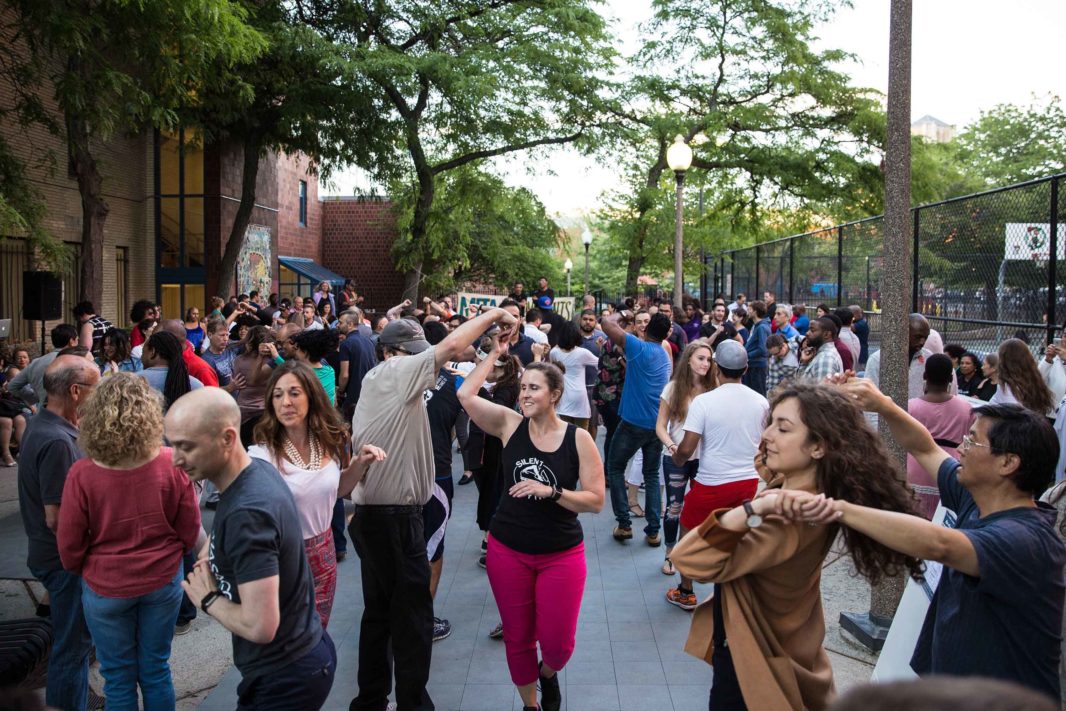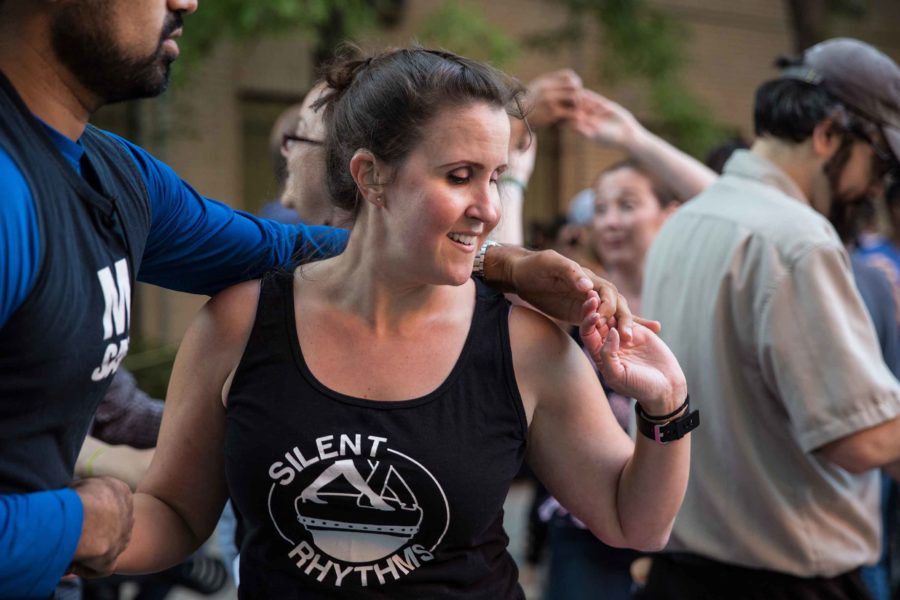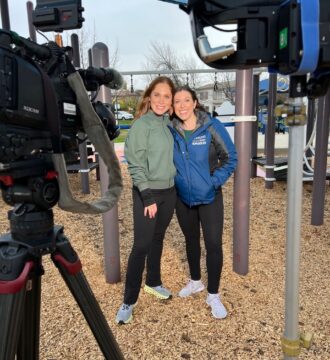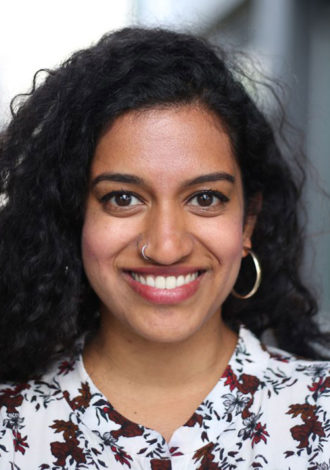Kerry Thompson fell in love with salsa from her first move. When she twirls and taps to the beat, you would never guess that she can’t hear the music. Thompson lives with deaf-blindness and can’t hear the rhythms to which she dances so well. It was Thompson’s persistence and love of dance that allowed her to learn through lip-reading and hand signal cues.
In 2006 she began to teach her deaf friends and the demand for her assistance skyrocketed. By 2008 she had formally launched Silent Rhythms, a 501(c)(3) nonprofit dedicated to teaching people with disabilities to dance, namely to dance salsa. Now Thompson teaches a number of workshops including Salsa in the Park, Salsa Dance Workshops, Salsa-ASL Workshops, and Salsa for the Deafblind. She’s also collaborated with the Boston Ballet, the Boston Children’s Museum, and other local organizations to bring adaptive dance to the community.
We caught up with Thompson about Silent Rhythms, her love of dance, and the disability community here in Boston.

Exhale: What drew you to salsa dancing in particular?
Kerry Thompson:I love all forms of dance but salsa is special to me for several reasons. One, salsa was the dance someone first invited me to participate in. Second, I love the high energy and spice of salsa dance. Third, I experienced salsa first through Rueda de Casino, which is a form of salsa dancing [where] each move has a hand signal for the caller to use. Most places where Rueda and Salsa take place are extremely loud so no one can hear the calls, hence the hand signals. The hand signals made me feel like I was on the same page as my hearing dancers since I could not hear the music.

How did you overcome your physical differences to learn to dance?
Part one of this process is changing my mindset, which had been influenced by society’s perceptions that people with physical or sensorial differences cannot learn how to dance. I had to break free of this attitudinal barrier. The second part was finding ways to compensate for not being able to hear the music – learning how to feel the music through vibrations. Understanding the musical patterns of salsa, bachata, merengue, and cha-cha was also important. I had to learn that salsa had a 1-2-3/5-6-7 pattern, bachata had a 1-2-3-tap pattern, merengue had a 1-2-1-2, and cha-cha had 1-2-quick quick quick-1-2-quick-quick-quick.
There are drills that a lot of dancers can learn, yet most dancers will just gloss over these or never bother to perfect their techniques but these drills really helped me to keep my frame, control my turns, and find my center. What is amazing is that eventually these techniques helped my balance issues in my day-to-day life.

Photo by Maureen White
Thompson dancing at a “Salsa in the Park” workshop.

What inspired you to start Silent Rhythms and how has it evolved to what it is today?
My deaf friends gave me the idea in 2006 when they would marvel at my salsa skills but bemoan that they could not learn how to dance. So I began teaching a small number of deaf friends as part of a “Salsa for the Deaf” dance class. The demand for that class skyrocketed. At the same time this growth was happening, I was also beginning my work as a global human rights activist. This work had me interacting with people with all types of disabilities and as a result I began expanding my work from the deaf to including people with all disabilities in Silent Rhythms’ work.
In my human rights work and in my personal experience, I was able to comprehend how isolated and discriminated people with disabilities are. Most members of society will not attend a disability awareness workshop, but many will attend a cultural event such as a dance, a concert or a play. That is when I realized that through dance, I was bringing people of different backgrounds together with two incredible outcomes – teaching people with disabilities how to dance while teaching the people that danced with us how to be inclusive. This new understanding led to a new mission – promoting inclusion of people with disabilities in the arts while using the arts to promote inclusion in society.

What do you think dance brings to the disability community?
Silent Rhythms has been able to help ease the fears of people with disabilities about learning something new, especially something that most people believe to be impossible. We have removed barriers – financial, physical, and communicative. Dancing has brought me such joy, profound friendships, and a way to communicate with others without having to speak the same language. Dancing is its own language – one that is not spoken through words but through movements.
So much time, energy, and funds focus on access to these three – education, employment, and healthcare. All of these are extremely critical issues, but access to the arts falls by the wayside. The arts have the power to bring people from different backgrounds together – to create a dialogue and inspire real change in society. That’s why it is so important to think about access to the arts.

What can the community do to support Silent Rhythms?
Silent Rhythms is a small nonprofit so people can of course make a tax-deductible donation. Those funds will help with renting space, paying for sign language interpreters, sight guides and other communication support. All of Silent Rhythms’ workshops are free since we understand that one barrier to the arts that people with disabilities face is the financial barrier. We do hope to provide funds for people with disabilities to attend dance workshops outside of our own program.
Aside from financial contributions, we are always looking for volunteers – dancers, ASL-users, or someone who is willing to lend a hand/an arm to be a sight guide. The most important way that people can help is when they see a person with a disability, whether by the dance floor or out in the general community, just reach out a hand.



 5 min read
5 min read



